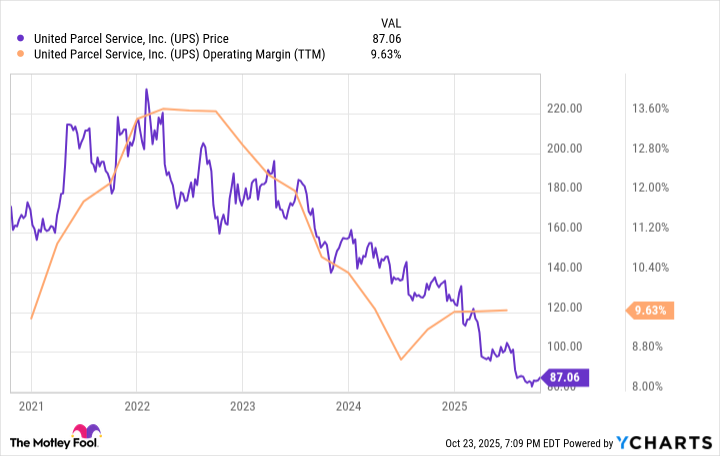This has been another frustrating year for investors in United Parcel Service (UPS +0.26%). Shares of the transportation stock have dropped about 30% on the year as U.S. revenue and parcel volumes have slipped significantly. Margins aren't nearly as wide as they were during the pandemic, and management hasn't given much guidance for what will come.
That said, UPS isn't exactly up a creek without a paddle. The company has been actively restructuring its logistics network to cut costs and refocus on profitability. While it still has a way to go, several new developments could help speed up its turnaround. One of those is artificial intelligence (AI).

NYSE: UPS
Key Data Points
The AI boom could help drive UPS' next margin expansion
UPS runs one of the most complex logistics networks in the world, with millions and millions of packages moving through it each day. The more efficient this system runs, the more profit UPS can collect.
Efficiency, in this case, means lowering the costs associated with transporting and sorting each package, which, in turn, widens operating margin. As seen below, UPS has been struggling to regain the margin it had during the pandemic -- something, I think, artificial intelligence could help it do.
UPS already uses algorithms like ORION to optimize its delivery routes. But newer AI tools could go even further. Computer vision systems, for example, could speed up package sorting in hubs, while more accurate demand forecasting could prevent routes from being underused.

Automated robots in a UPS warehouse. Image source: UPS.
Likewise, humanoid robots could handle repetitive tasks, like lifting and stacking, that slow down work crews. On that front, UPS has been in talks with the robotics company Figure AI to implement humanoids in UPS' warehouses. These humanoids would be in addition to the sorting robots that already operate in UPS' Velocity warehouses.
If these technologies were to scale successfully, it's not a stretch to see UPS meaningfully lower costs. It may not be an AI pioneer, but it's learning to use automation in the most practical way, which can only be good for its bottom line.






